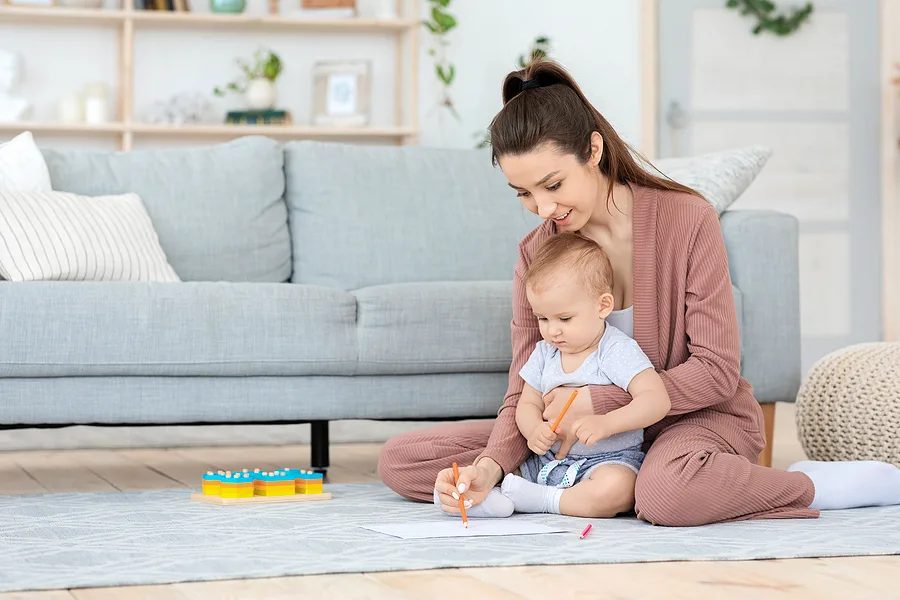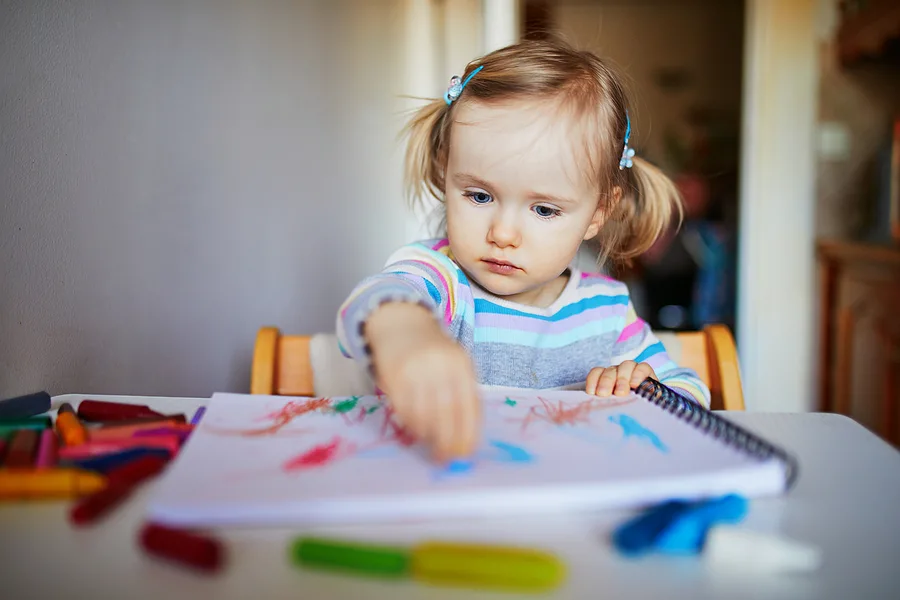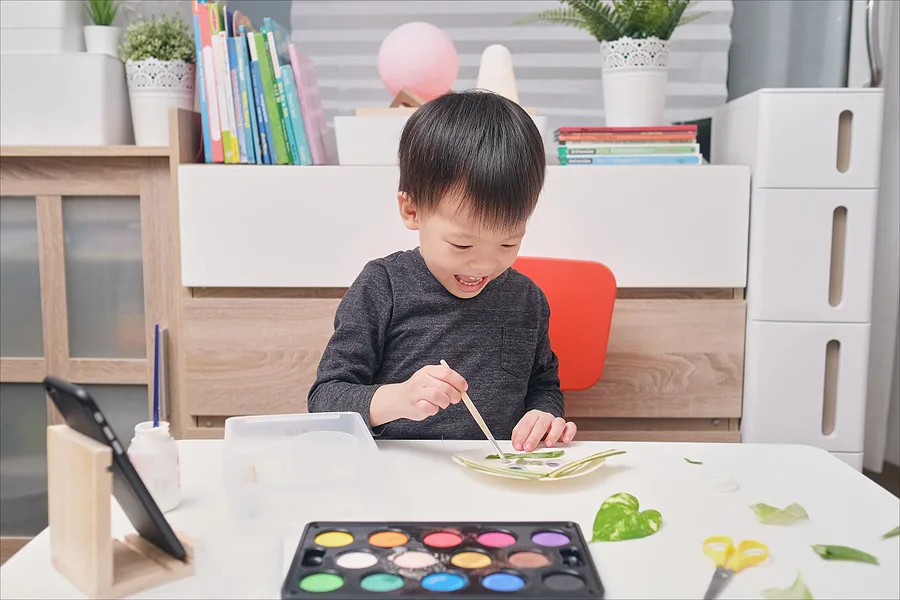During early childhood, children develop their fine motor skills in fairly predictable patterns.
Fine motor skill involves controlling the muscles of the hands and fingers, tongue, eyes and toes.
Some examples of fine motor skills are cutting, dressing and building a puzzle.
Here is a comprehensive fine motor skills development checklist from birth to the age of six.
Remember that all children are individuals and they develop at their own pace. Use these milestones as a rough guide only.
The milestones listed here are a summary taken from the books “Total Learning: Developmental Curriculum for the Young Child”, by Joanne Hendrick; “Language and School Readiness”, by Martie Pieterse; and “From Birth to Five Years: Children’s Developmental Progress”, by Mary Sheridan.
0 to 12 Months
The milestones for the first year are separated into two sections.
0 to 6 Months:
These are the fine motor skills milestones from 0-6 months:
- Follows moving dangling toys with eyes
- Clasps and unclasps hands
- Engages in finger play
- Holds rattle for a few moments but cannot yet coordinate the hands and eyes
6 to 12 Months:
These are the fine motor skills milestones from 6 to 12 months:
- Moves head and eyes to follow movements and objects
- Reaches and grasps for objects with both hands, later with one hand
- Holds bottle
- Uses the whole hand to palmar grasp

- Passes objects from one hand to the other
- Puts objects in the mouth
- Drops a toy but cannot yet place it down
- Takes toys out of a container and hands something to you, but struggles to let go
- Holds a spoon to attempt to feed self
- Turns over objects in hands
- Pokes at small objects using the index finger
- Grasps string between finger and thumb in scissor fashion in order to pull a toy closer
- Begins to use a pincer grasp when picking things up (thumb and one finger)
- Brings hands together and claps them
1 to 2 Years
Here is a breakdown of fine motor skills for 1 to 2 years:
- Picks up small objects with pincer grasp (thumb and tip of index finger), with either hand
- Uses both hands but may show a preference for one
- Holds objects with tripod grasp, and bangs together to make a noise
- Holds crayons with palmar grasp (whole hand)
- Combines movements, such as holding something and turning it around
- Builds a tower of 3 blocks
- Places 5 pegs into a pegboard
- Builds a 2-piece puzzle
- Places 4 rings on a stacking toy
- Turns pages of a book (2 or 3 at a time)
- Points at pictures with the index finger, in picture books
- Drawings are uncontrolled scribbles and dots (scribbles to and fro)

- Holds crayons and pencils in either hand or sometimes in both hands
- Throws a small ball
- Paints and makes strokes using whole arm movements
- Screws a lid onto a container, unscrews it and turns knobs
- Removes food from a wrapper
- Takes off shoes and attempts to put them on
- Controls a toy that is further away from his hand, such as a toy on a rope
2 to 3 Years
Here are the fine motor skills for 2-year-olds:
- Uses one preferred hand consistently when doing activities
- Threads 4 large beads onto a string
- Turns one page of a book at a time
- Builds a tower of around 7 or 8 blocks, and bridges
- Snips paper with scissors
- Holds crayons with thumb and fingers, with improved tripod grasp
- Makes circular, vertical and horizontal lines
- Imitates letters T and V
- Begins to move wrist while painting
- Paints dots, lines and circular shapes/strokes

- Manipulates playdough – squeezes, rolls, pulls and pounds it
- Attempts to get dressed and undressed
3 to 4 Years
Most 3 to 4-year-olds develop the following fine motor skills:
- Builds a tower of 9 or 10 blocks
- Begins to build three-cube bridges from a model
- Threads large beads onto a shoelace
- Hammers nails and places pegs into a pegboard
- Manipulates play dough and clay – rolls it, makes balls, snakes, cookies, etc.

- Copies circles and crosses
- Copies letters V, H and T
- Holds pencil near the point, between the first two fingers and thumb, and uses it with good control
- Mostly uses the preferred hand
- Draws a person with a head and one or two other features
- Enjoys painting at an easel with large brushes
- Cuts with blunt-nosed scissors
4 to 5 Years
These are the fine motor milestones for 4 to 5-year-olds:
- Uses fingers separately
- Builds more complex towers of 10 or more cubes, with bridges of 3 blocks
- Cuts along a straight line

- Draws some basic shapes – circles, squares and triangles
- Copies crosses and letters V, H, T and O
- Holds and uses a pencil with good control
- Draws a person with head, trunk, legs, and usually arms and fingers
- Draws a house
- Opens and closes taps to wash hands
- Puts toothpaste on a toothbrush with both hands
- Better control when dressing
5 to 6 Years
Normal fine motor development for 5-year-olds includes the following skills:
- Picks up and handles tiny objects
- Builds 3 steps with 6 blocks, or 4 steps with 10 blocks, when shown
- Cuts out simple shapes
- Draws basic shapes, including diamonds
- Copies first name
- Copies numbers 1 to 5
- Copies letters V, T, H, O, X, L, A, C, U and Y
- Writes a few letters spontaneously
- Holds a pencil with an adult grasp and has good control when drawing and writing with crayons, pencils and paintbrushes
- Draws a person with head, trunk, arms, legs and features
- Draws other pictures, such as a house with details (door, roof, windows, etc.)
- Colours neatly and within the lines
- Has established left or right-handedness
- Cuts, pastes and glues materials
- Counts the fingers on one hand with the index finger of the other
- Threads and ties shoelaces
- Laces (embroiders) with wool and a thick needle
Read about the importance of fine motor skills development in early childhood, as well as some simple fine motor development activities.
You can also introduce simple fine motor toys to help improve fine motor control.

